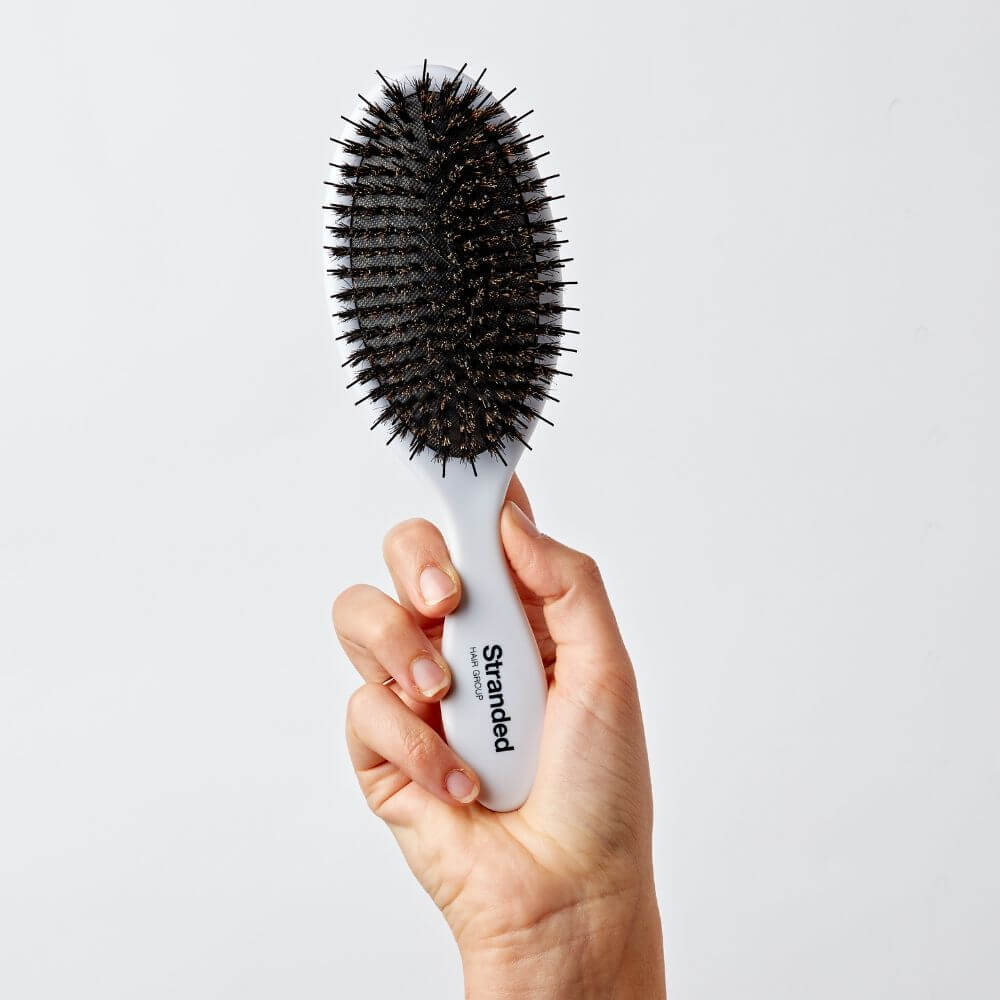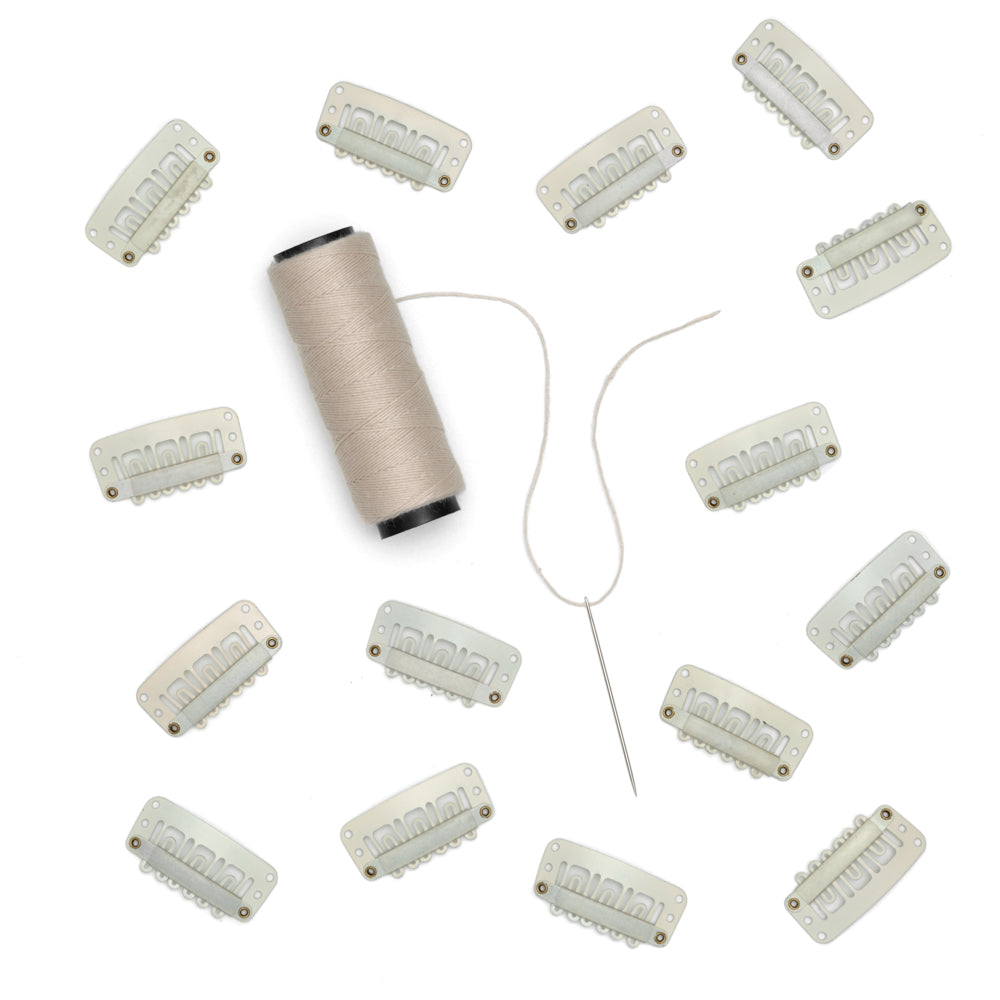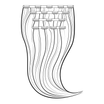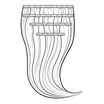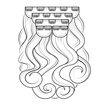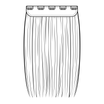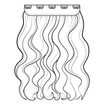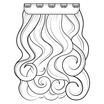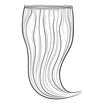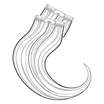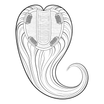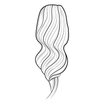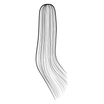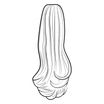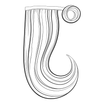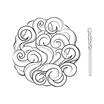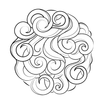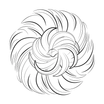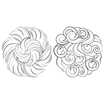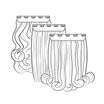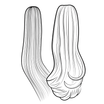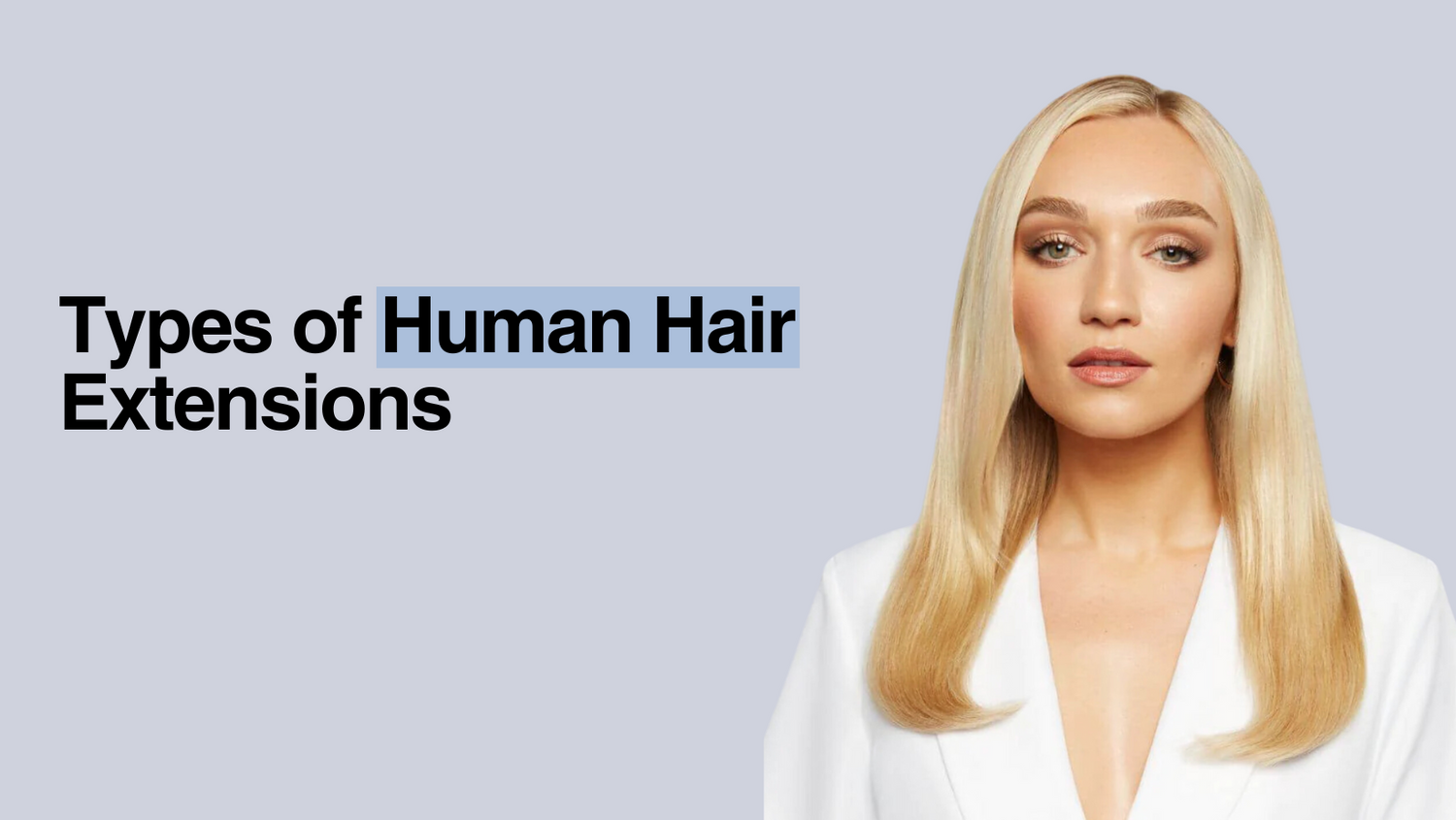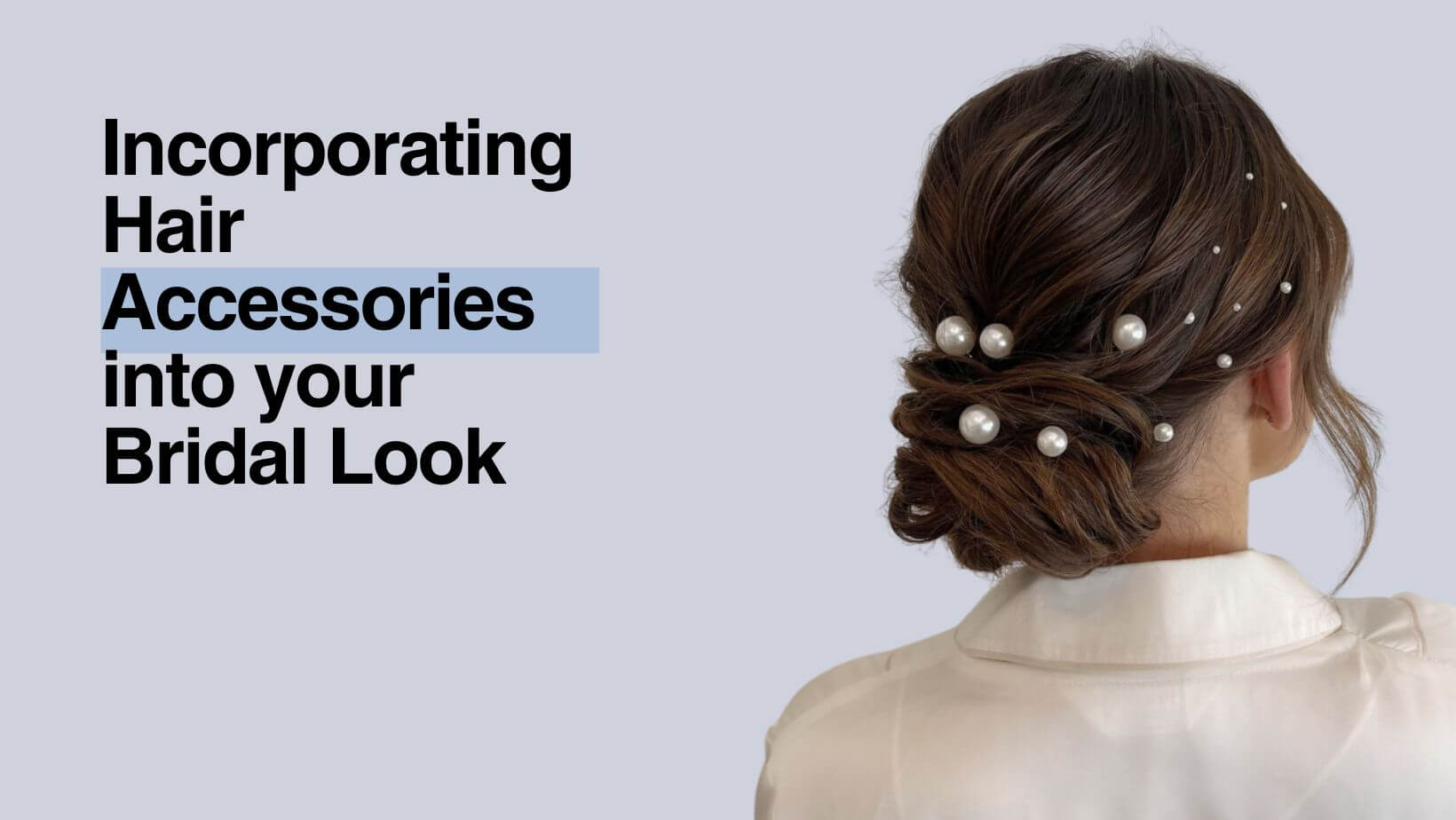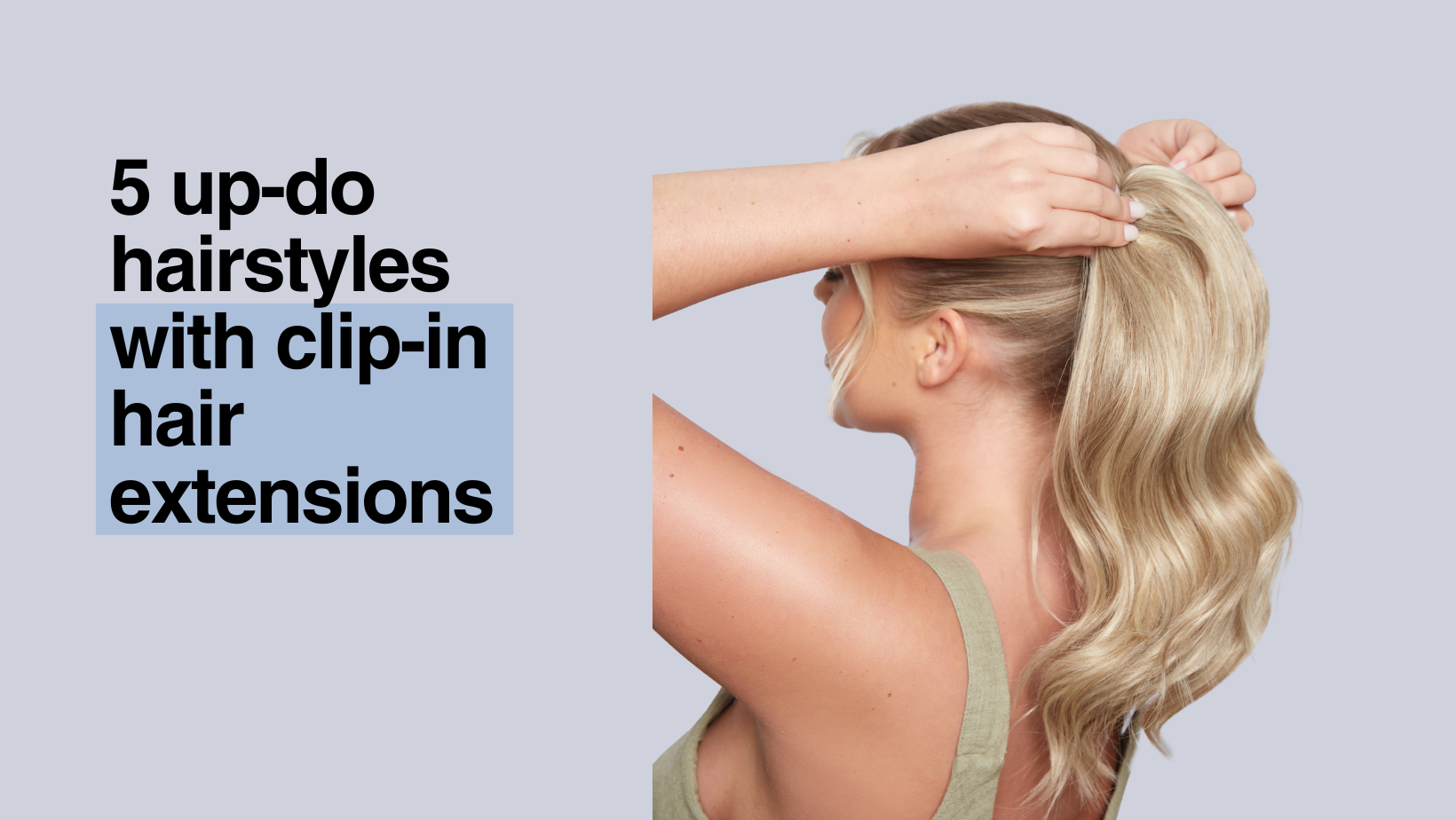Human hair extensions, though usually more expensive, are a more natural-looking alternative to synthetic hair extensions. Interested in trying human hair extensions, but not sure where to start? In this blog, we'll look at the different types of human hair and the different types of human hair extensions so that you can weigh up the best option for you and your hair type.

Simone wears our 18" Unclipped Weft Extension in #16/613 Sweetheart
Types of Human Hair
As odd as it sounds, there are different types of human hair, and the type of human hair you opt for can impact the overall look and feel of your extensions.
Virgin Human Hair
Virgin Remy hair is the most expensive type of human hair. This is hair that has never been treated or processed, with the cuticles intact and aligned in the same direction. This type of hair usually comes from a single donor.
Remy Human Hair
Standard Remy Hair has been minimally processed, with the cuticles intact and aligned in the same direction. However, this type of human hair can come from multiple donors.
Non-Remy Hair
Although this type of hair is still 100% human, it can be of slightly lower quality as the cuticles are not always intact or aligned in the same direction, which makes it cheaper. This type of human hair often comes from salons, combs, and brushes, and is from mixed donors.
Human Hair Extension Types
Now we've covered the types of human hair, let's take a look at the types of extension attachment and the benefits of each one.
Clip-in Human Hair Extensions

Gabrielle wears our Stranded 20" Lace Clip-in Human Hair Extension in #8/10 Baby Bronde
Clip-in human hair extensions offer a non-permanent, cost-effective way to add instant length and volume to your own hair. Relatively easy to apply, and incredibly versatile, clip-in human hair extensions are a more natural-looking alternative to synthetic extensions, bringing confidence without the commitment.
Tape Hair Human Hair Extensions

Image credit to North Professional Hair
Tape extensions are semi-permanent and applied by sandwiching the extension piece between two pieces of your natural hair, using the tape adhesive. This method achieves a more natural, seamless look than some of the alternatives, and causes minimum damage to the natural hair beneath. Tape-in hair extensions are to be applied and removed by professionals though, which does drive up their price point slightly.
Sew-in Human Hair Extensions

Simone wears our 14" Unclipped Weft Extension in #16/613 Sweetheart
Sew-in hair extensions are applied by braiding them into the natural hair, and then sewing or weaving them in. This is done by professionals and results in a semi-permanent, seamless blend into your natural hair, bringing volume and length.
However, it's important to note that this application method may not be a good choice for those who are head-sore or have particularly fragile natural hair due to the potential strain this can put on the scalp, and the time-consuming process of application.
Micro/Nano Ring Human Hair Extensions

Image credit to Abigail Nicholls
Nano or Micro Ring extensions are applied and removed by professionals, with small sections of natural hair being pulled through small metal or silicone rings with the extension piece attached, which are then clamped shut. This type of hair extension is semi-permanent.
This application method can be less damaging to your scalp and natural hair than some of the alternatives and brings natural movement to the extensions due to the close blend. However, if these aren't applied properly, the rings can be visible which detracts from the natural blend of the extensions.
Fusion Bond Human Hair Extensions

Image credit to Image credit to Steven Matthew on YouTube
Fusion bond extensions are applied by using heat or adhesive to fuse the extensions with your natural hair. This is a semi-permanent but long-lasting extension type, applied by professionals. It creates a natural look and feel overall, with a seamless blend being offered between the extensions and natural fibres.
However, it's important to note that this type of extension can be expensive and potentially damaging during the removal process.
Halo Human Hair Extensions

Image credit to Lula Hair
Halo extensions are attached using a single weft which is attached to a transparent wire, which sits on top of the head. These types of extensions are quick and easy to put on, and they don't require any adhesives or clips, which means they cause minimal damage to your natural hair.
This extension type seems to be going viral on Instagram at the moment, but it is important to recognise that while this method is relatively damage-free, it does have rather limited styling options, and may not be as secure as other extension fittings.
There are different types of human hair extension and different types of human hair, and we hope that this article has helped you weigh up which option would be the best suited to you and your hair type. The key to deciding on which human hair extension type, is to keep comfort and maintenance at the front of your decision-making; while also considering look and feel. For more information on human hair extensions, click here.
Found this helpful?
Why not check out some of our other articles? Or if you're a more visual learner, why not look at some of our handy How-To Videos?

